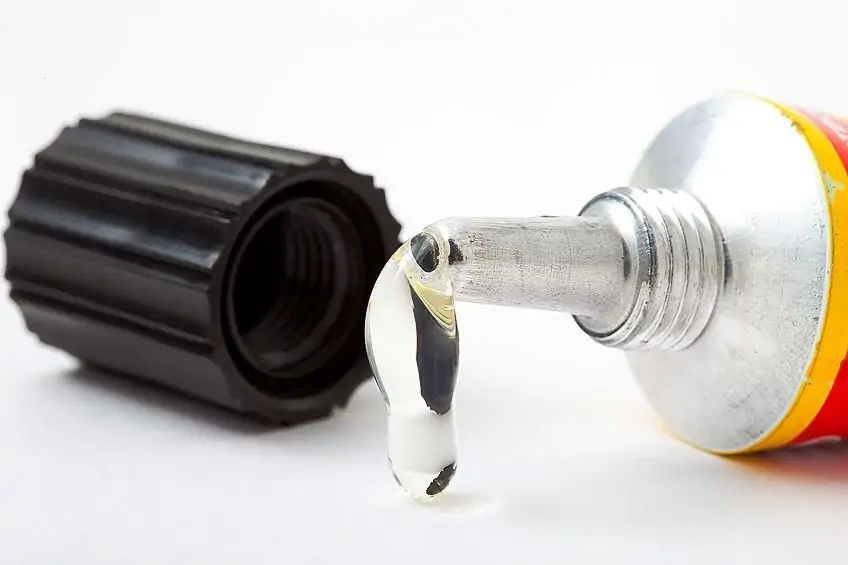I am always very reluctant to use cyanoacrylate glue (C.A. glue, super glue) anywhere near lenses. Most of them outgas furiously for the first 24-48 hours and if any of that gaseous compound ends up on glass surfaces they can visibly fog them and is difficult, if not impossible to remove without further damage (e.g. to the coatings). It does not always happen but if it does then its a problem. You can get low outgassing CA glue, but it seems hard to find and only available from specialist providers. The other issue with C.A. glue is that unless you use a highly viscous form of C.A. glue (and this CAN be found - though is somewhat harder to find than the normal runny stuff) normal garden variety C.A. glue is so damn runny and hard to control it almost inevitably ends up going where you do not want it. And if you are really clumsy, it may even end up inside the lens.
If you do it, do it with full knowledge of the risks and use extreme care and at least tape a bundled up tissue over the front lens element. For these reasons, for any lens related application, I prefer a good quality epoxy. Even here be aware that quick set epoxy is much weaker than the slower curing "super strength" ones that take 24 hours to cure. With an application like this where the surface area of the bonded surface is tiny I would use the super strength slow setting one to avoid future problems. But that in turn raises another issue - how to set up some kind of jig to hold the dot in place till curing is advanced enough to no longer need it. A small piece of tape over the dot, holding it in situ may work.
Many years ago I had a dot fall off my Summicron 35mm f2 version 3 (dammit) and not because it was ever dropped, bumped or otherwise abused. I did not find mine but after some thought, I realized that some dress making pins have small spherical plastic heads on them in various colors and can be found cheaply at stores that cater to the trade. I chose a red one, then using a Dremel tool, cut the small round head in half, smoothed the cut flat base by rubbing it on fine wet and dry emery paper and glued that on instead. It looked and performed identically. To glue it I am pretty sure I used the epoxy technique mentioned above. Five years later I sold the lens - the dot was still securely attached and looking every bit like the original. A little innovation and inventiveness goes a long way sometimes!






